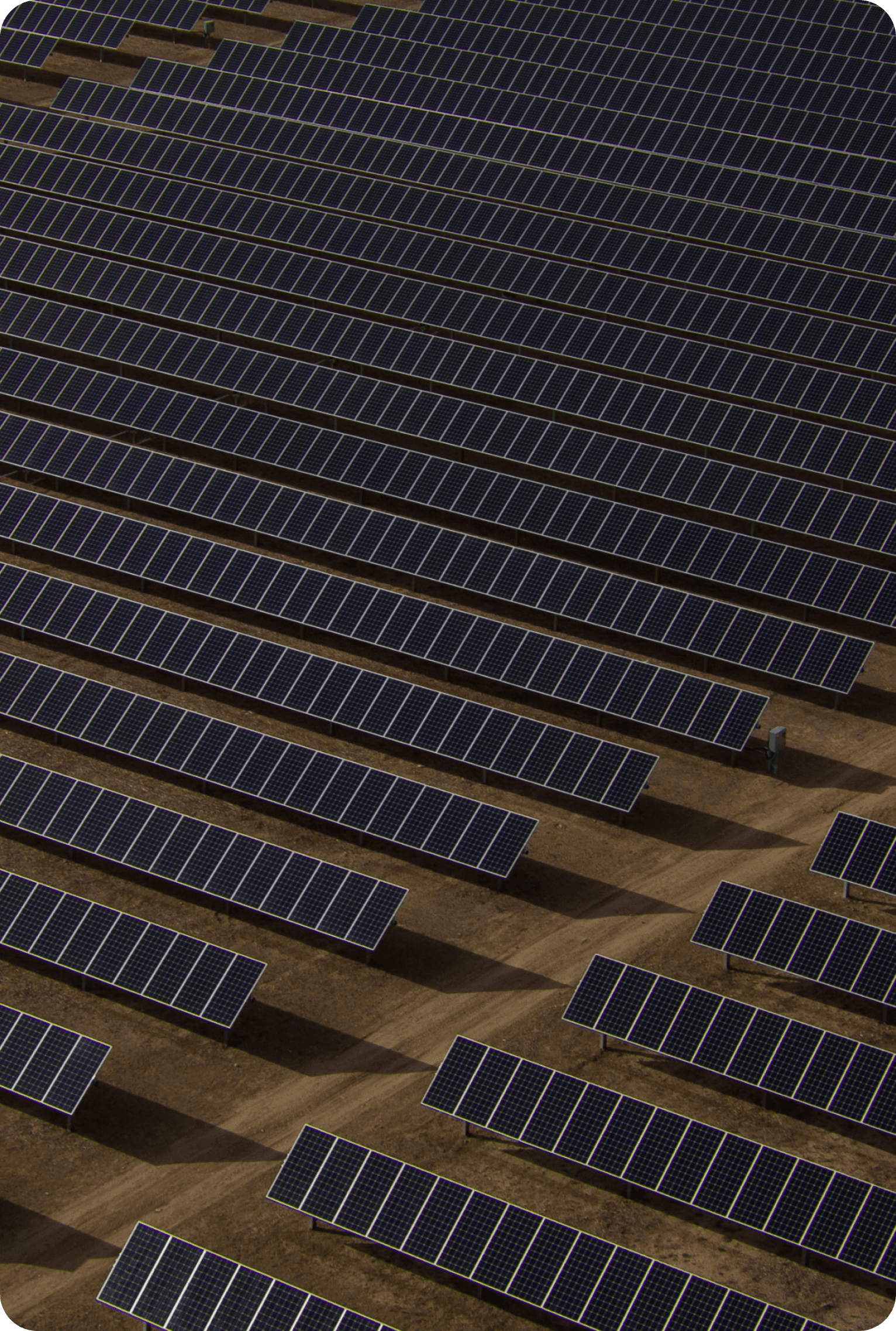
Browse other blogs
Best Practices for Smooth Functioning of Solar Assets After Weather Events Like Hail and Hurricanes
Extreme weather events (EWE) pose significant threats to the reliability and longevity of solar energy systems. Adopting best practices across site assessment, planning and design, and operational phases can help safeguard solar investments against weather-related damage.
BEST PRACTICES TO PROTECT SOLAR ASSETS
With increasing EWE worldwide, fortifying solar assets is becoming critical. Solar stakeholders must adopt comprehensive measures, from meticulous site assessment and resilient planning to vigilant operational strategies, to mitigate the risk to their solar investments from hail, cyclones, hurricanes, earthquakes, tornados, sand storms, and floods.
The practices outlined below can help stakeholders significantly enhance the resilience of solar installations against a wide range of weather anomalies and contribute to the long-term resilience of solar power plants.
Comprehensive Site Assessment
Assess the site's historical weather patterns to identify potential risks.
Consider local topography, proximity to water bodies, and historical data on extreme weather events.
Conduct detailed studies on wind speed, precipitation levels, temperature fluctuations, and seismic activity to inform design and operational decisions.
Resilient Planning and Design
In the design phase, incorporate strong structural engineering standards to withstand extreme weather conditions.
Utilize durable materials and construction techniques resistant to impacts such as hail, high winds, and seismic activity.
Implement smart zoning and layout strategies to minimize exposure to cyclones, tornadoes, or hurricanes.
Ensure insurance coverage for weather-related damage.
Advanced Monitoring and Early Warning Systems
Install advanced weather monitoring systems onsite to track weather in real time.
Integrate early warning systems to allow for timely shutdown and evacuation procedures.
Implement remote monitoring capabilities to assess system performance and integrity during adverse weather conditions.
Protective Infrastructure and Redundancy
Build protective infrastructure such as hail guards, storm shutters, and lightning protection systems to shield solar panels and critical equipment.
Establish redundancy in system components to minimize downtime in the event of damage or failure.
Add backup power systems to ensure continuous operation during weather-related outages.
Comprehensive Maintenance and Inspections
Schedule regular maintenance and inspection routines to identify and address vulnerabilities proactively.
Conduct post-event assessments following severe weather occurrences to assess damage and promptly implement necessary repairs.
Train staff in emergency response protocols and safety procedures to effectively manage crises and mitigate risks.
Digital asset management solutions provide crucial benefits for planning and recovering from weather events. Owners and operators can utilize real-time monitoring and maintenance data from these platforms to detect and mitigate vulnerabilities promptly. Additionally, asset management software enhances the efficiency of fieldwork and post-event damage assessments, ensuring rapid recovery and safe resumption of operations.
HOW TASKMAPPER HELPS
TaskMapper offers a comprehensive suite of tools and services to identify potential issues and facilitate swift recovery in the face of force majeure events while ensuring minimal disruption to operations. With TaskMapper, you can easily access topographic studies, as-built system documentation, data collation, analysis and visualization, comprehensive reports, and remediation task management. Here is how to enable these, all at a fraction of the usual cost and time.
Site Assessment & Design
As part of the site assessment and development phase, TaskMapper enables a range of topography and hydrology studies to help you make informed decisions. Analyzing the terrain helps determine the elevation and potential slope variations that affect panel placement. Hydrological analysis helps design detailed drainage systems that mitigate flooding risk through controlled rainwater runoff.
Quality Control
TaskMapper’s no-code workflows and QC tools automate construction quality checks to ensure adherence to required industry standards and project specifications.
Process digitization ensures proper legal and technical due diligence to mitigate risks.
Damage Assessment
TaskMapper leverages advanced drone analytics to conduct thorough site inspections to visualize and prioritize defects. Employing drones enables rapid coverage of large areas, high-res imagery for mapping extensive damage caused by hail storms or hurricanes, and minimal manual inspections in hazardous conditions.
Fast and accurate data facilitates effective decision-making and remediation planning.
Detailed Reporting
TaskMapper generates defect reports providing stakeholders with comprehensive insights into the extent and nature of damage.
Dashboards with detailed visualizations and analytics simplify reporting, and access to specific information, enable informed decision-making, help prioritize remediation efforts, and track status effectively.
TaskMapper’s Files and Document Management System organizes and stores documents generated from workflows across the asset lifecycle to ensure easy access to as-built files, spares and replacement details, OEM contacts, relevant documentation, and more.
Efficient Task Management
TaskMapper streamlines task management processes through its user-friendly mobile app, allowing for easy oversight and coordination of field tasks.
Field personnel can access prioritized task lists and real-time updates, ensuring that critical remediation activities are addressed promptly.
The mobile app enables seamless communication and collaboration among team members, facilitating efficient response efforts after force majeure events.
Faster Warranty Claims
TaskMapper streamlines warranty claims by centralizing documentation and communication with stakeholders, expediting resolutions, and minimizing delays in reimbursement or replacement of equipment.
Through its integrated approach to damage assessment, reporting, task management, and warranty claims processing, TaskMapper empowers solar energy stakeholders to mitigate the impact of force majeure events. By leveraging cutting-edge technology and efficient workflows, TaskMapper enables a rapid and cost-effective response to weather-related challenges.
CASE STUDIES
Many customers have successfully leveraged TaskMapper to accelerate their recovery actions, minimize downtime, and restore their solar installations to optimal performance.
USA: Hail Damage Assessment
When a massive hail storm hit Andrews County, Texas in mid-2022, TaskMapper helped our client swiftly identify the scale of damage at one of their solar farms. Using drone data analytics, TaskMapper inspected the site, identifying and mapping over 27,000 damaged/cracked modules.
MAPS: Geolocated defects list, classification, charts, and tables for analysis
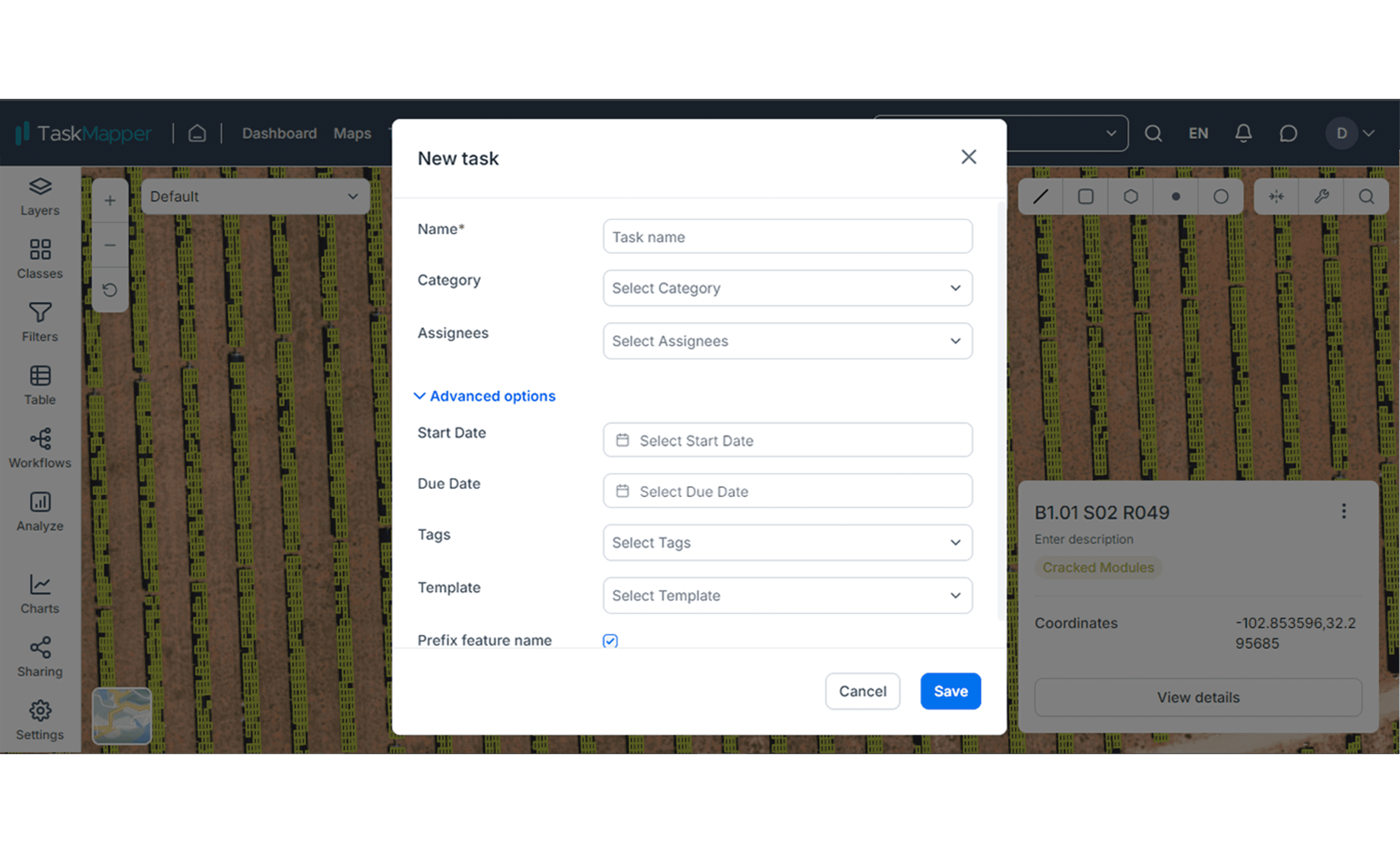
MAPS: Tasks can be created and assigned
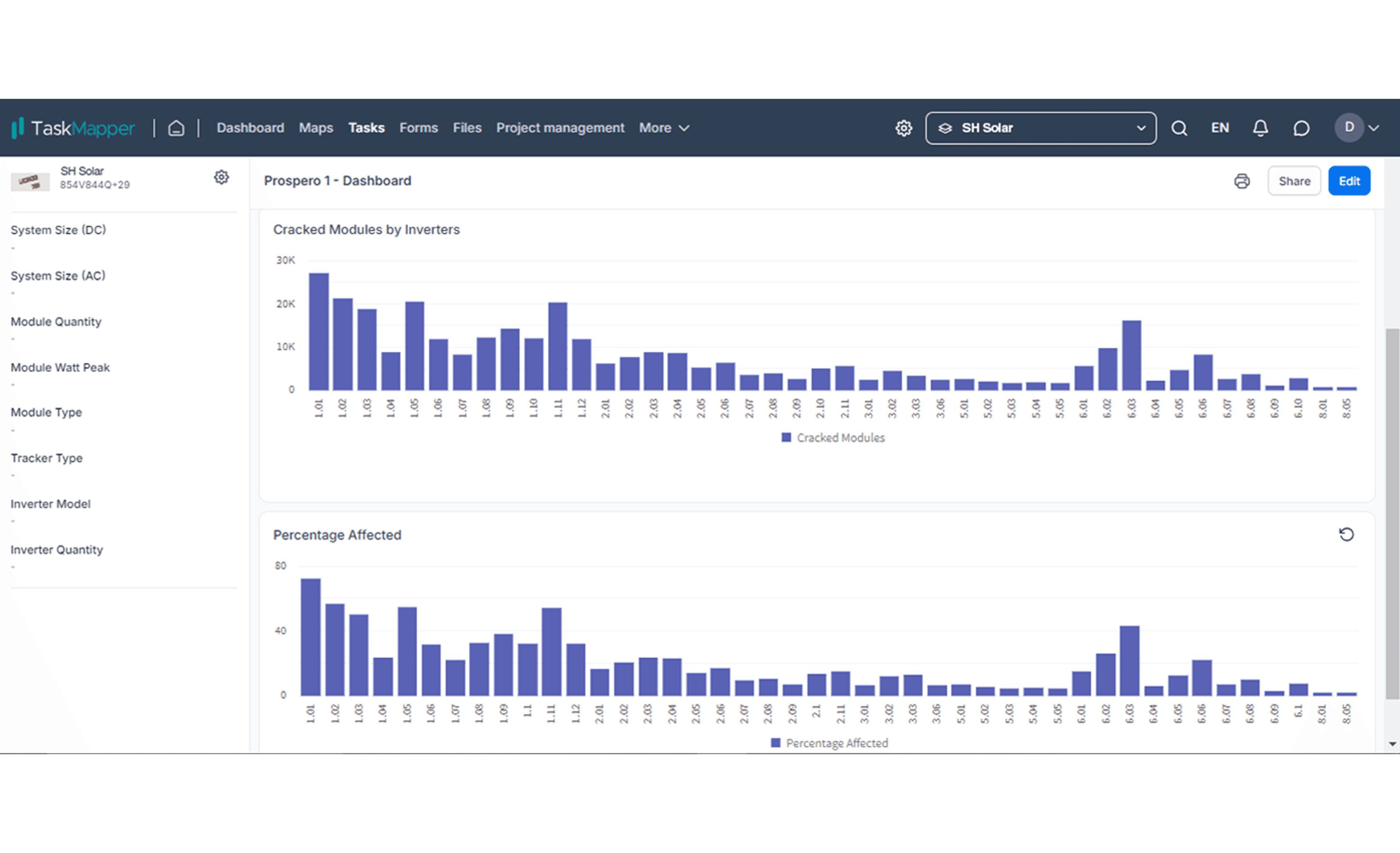
DASHBOARD: Dashboards to understand damage and defect remediation status
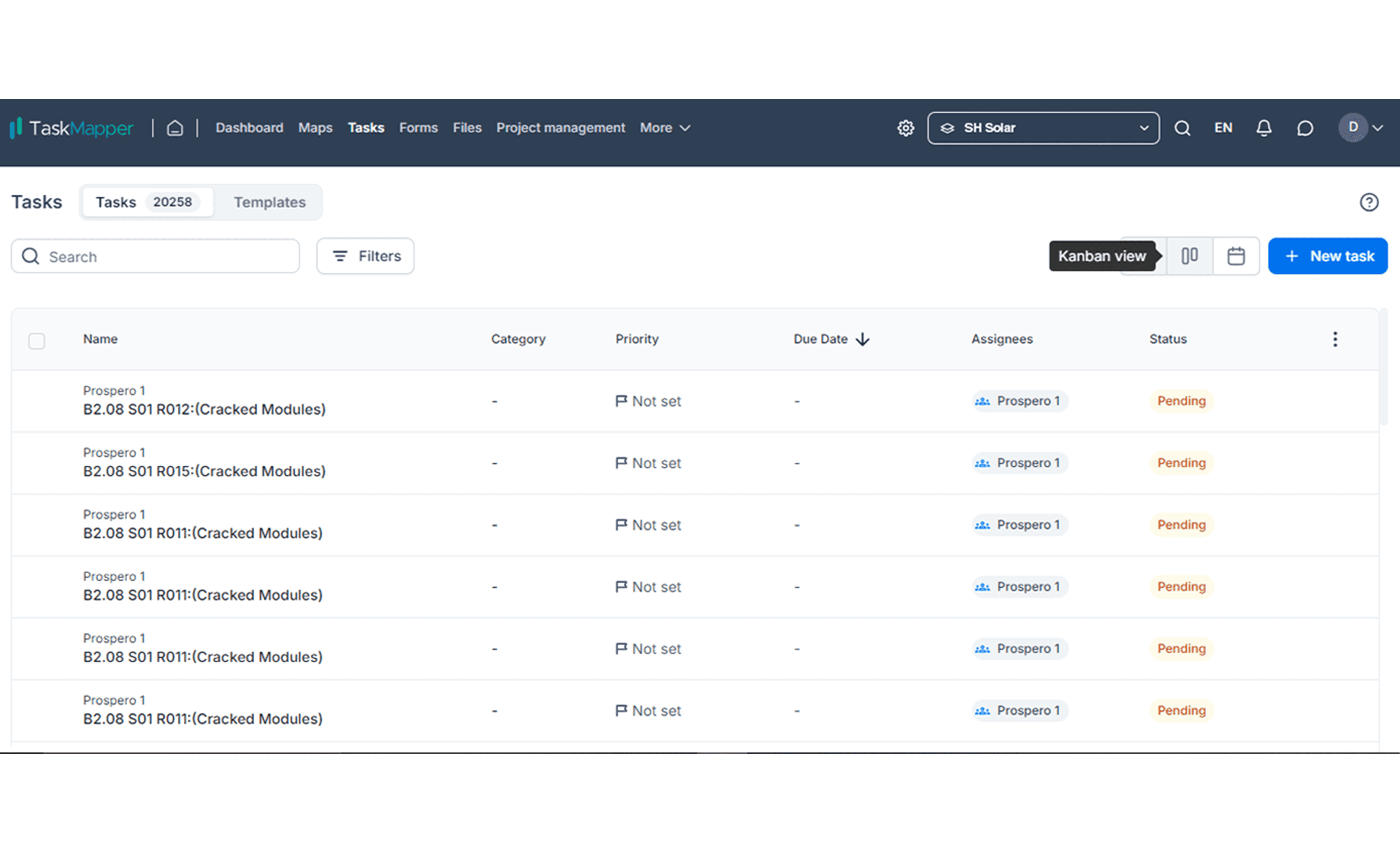
TASKS: Remediation tasks that incorporate all relevant details to get the job done and automate reporting
USA: Wind Damage Assessment
Texas, home to our client's 1,310 MW solar project, is also prone to high-speed winds and has an annual hurricane season. TaskMapper helped accelerate defect detection and repair prioritization for a part of the site in early 2023 after a tornado. The company also uses TaskMapper for multiple annual maintenance scans.
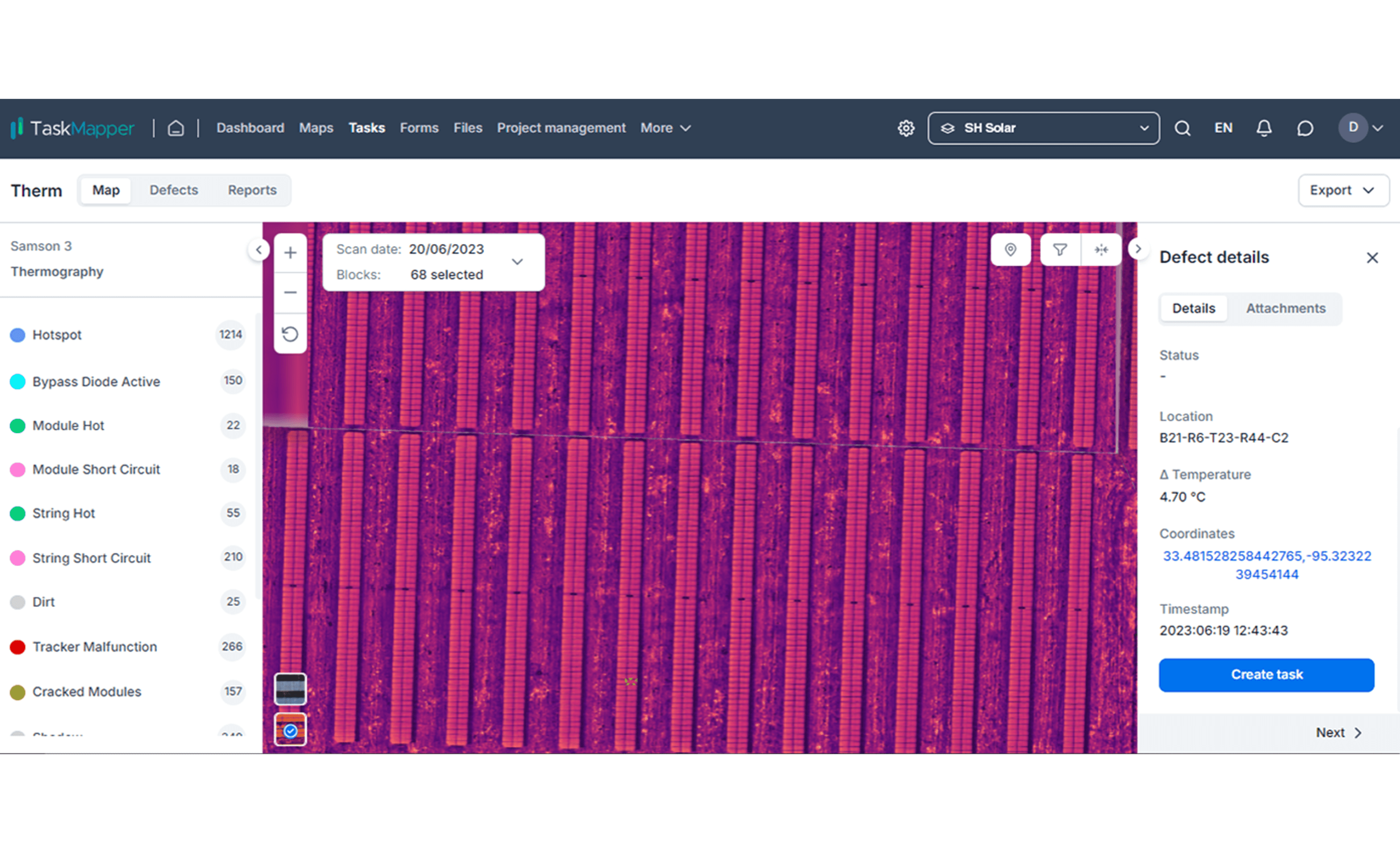
TERRA: Map view with geolocated and classified defects
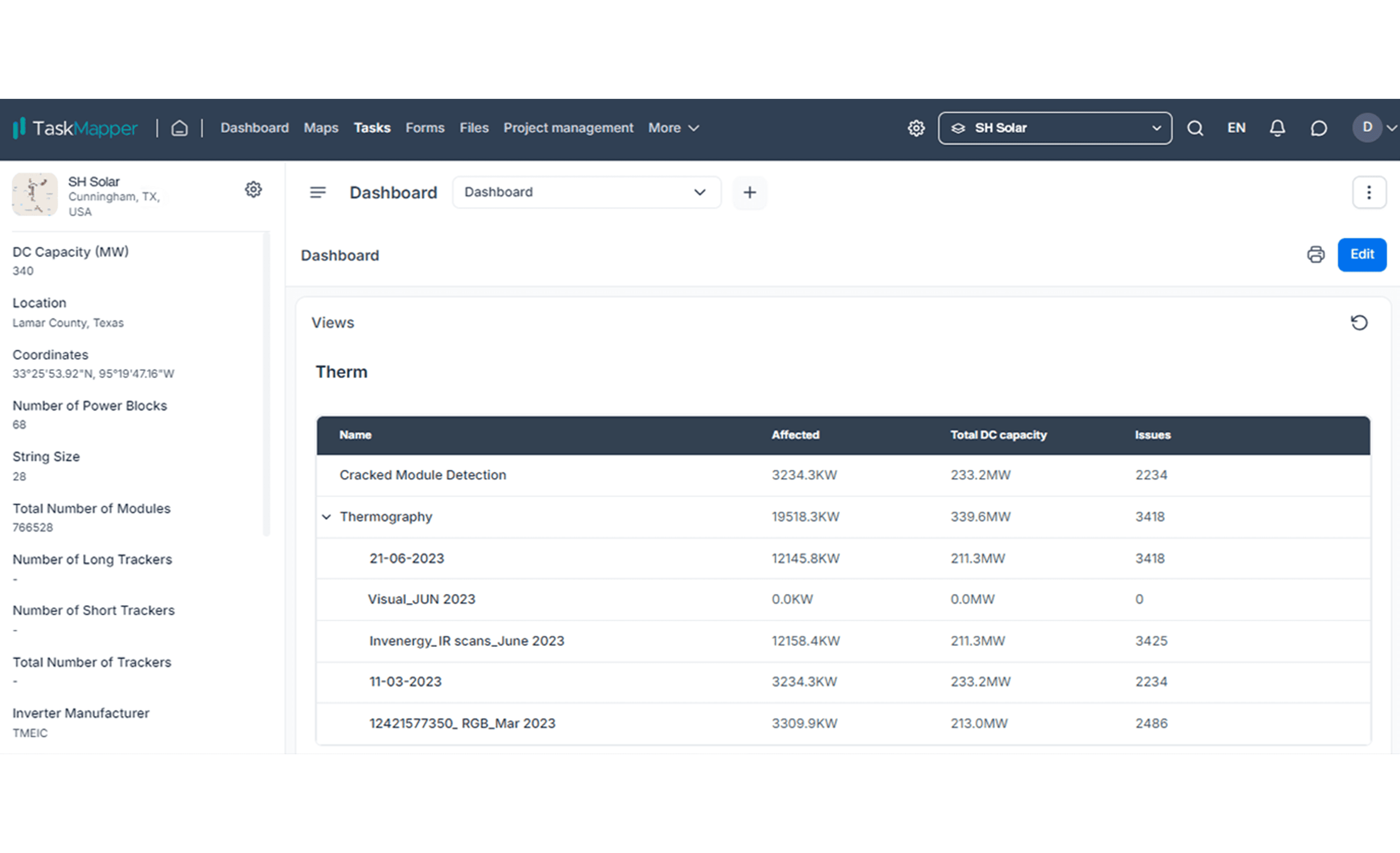
DASHBOARD: Reporting oversight with granular details
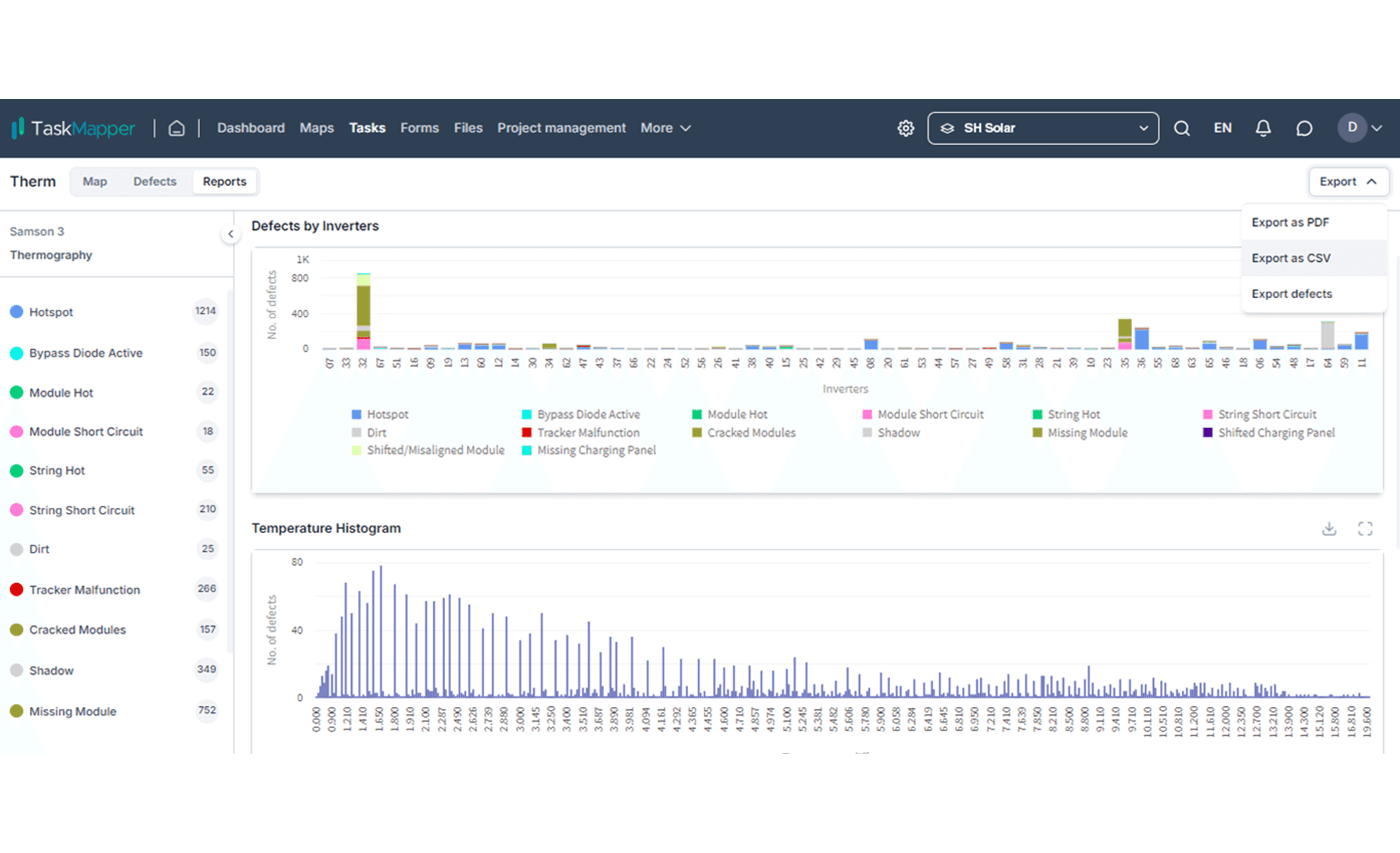
REPORT: Tabular and chart-based reporting that can be exported and shared
Australia: Hail Damage Assessment
Our Australian client successfully leveraged TaskMapper to accelerate its recovery actions by identifying hail damage to nearly 28,000 modules in one of their projects in Queensland.
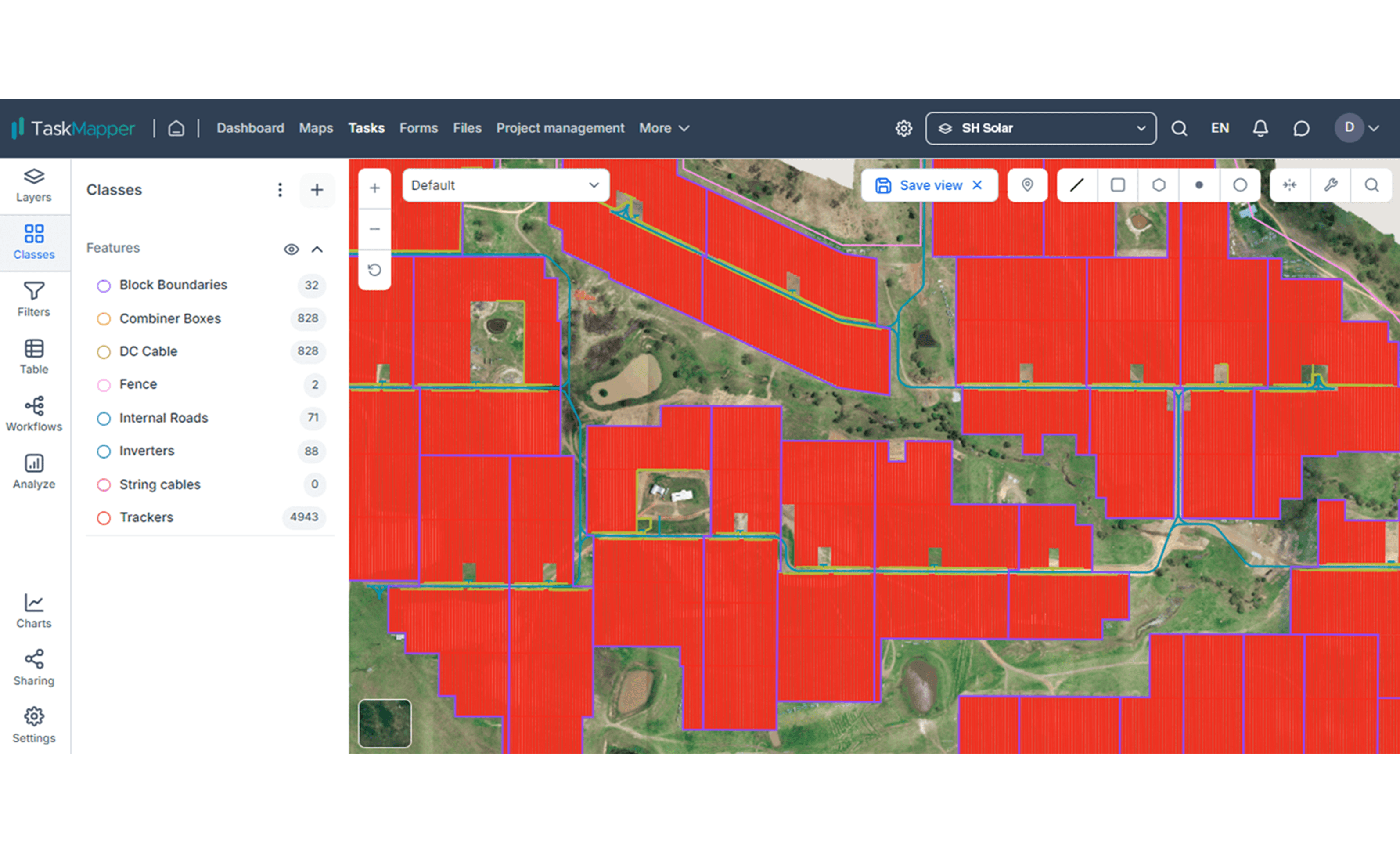
MAPS: As-built view on TaskMapper
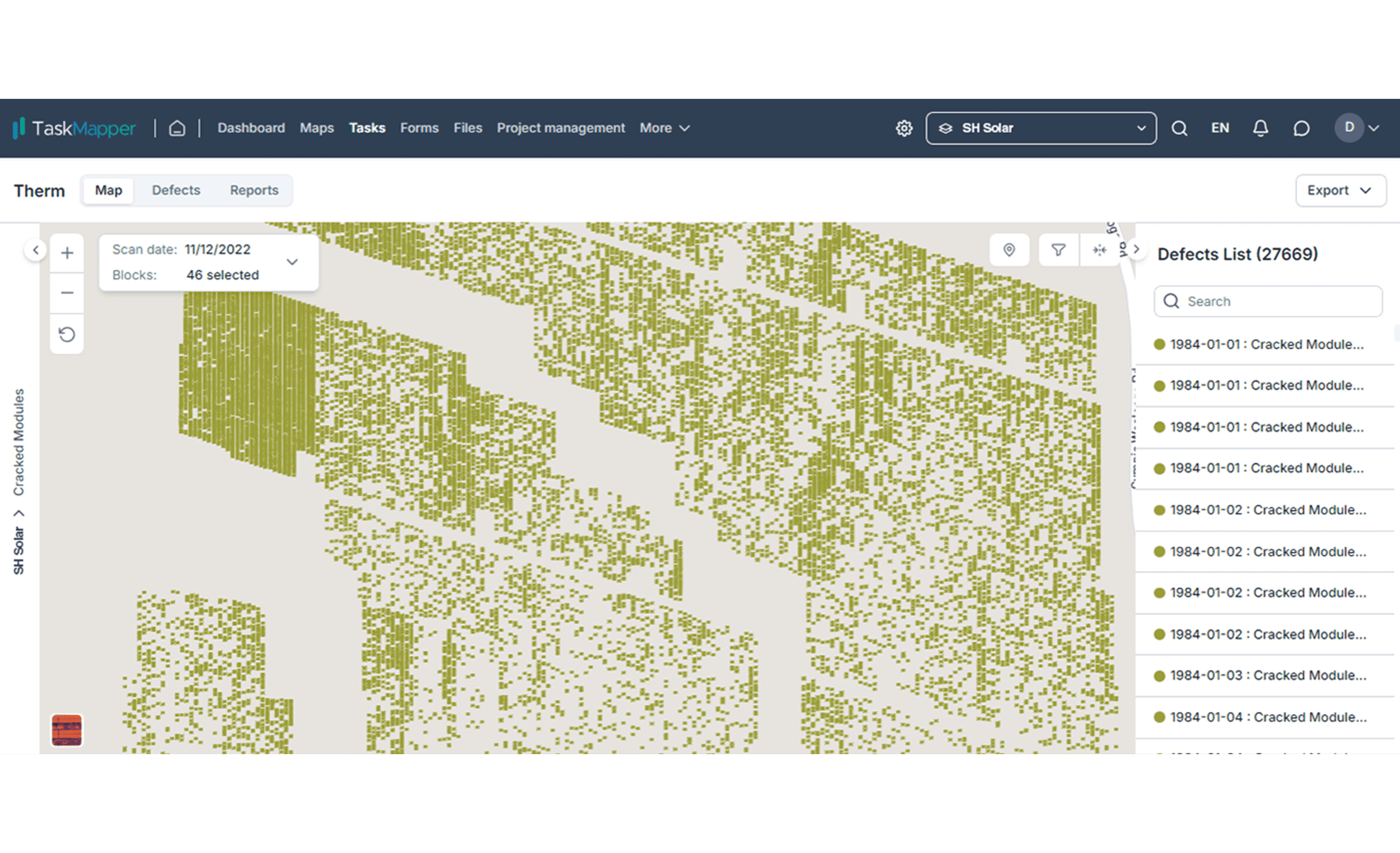
THERM: Map view of identified defects
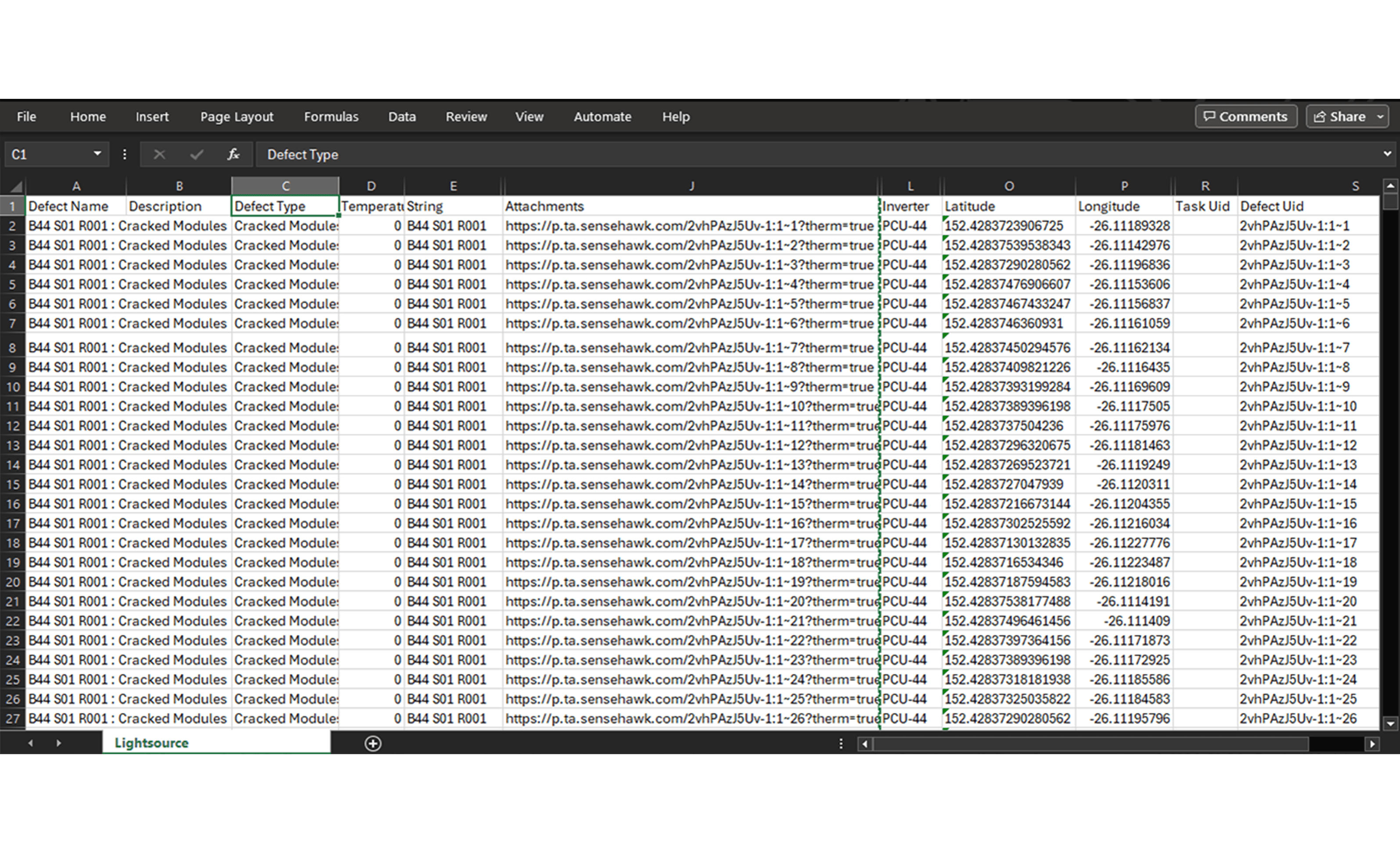
REPORT: CSV report of defects with details
DASHBOARD: Share dashboards with status reports on defects, remediation, and other metrics
TASKS: Easily create remediation tasks that include all relevant details
South Asia: Hydrology and Land Assessment
This client used TaskMapper to swiftly assess the suitability of a large land parcel to construct a solar power plant. The developer wanted to study the land slope, elevation, water-flow path, and drains across the 600-acre site in a river-side city with two rivers flowing through it. TaskMapper provided the land study reports within an impressive 2-day window.
MAPS: Topography and hydrology studies for site feasibility assessment
If your solar assets have been exposed to any EWE, the SenseHawk team is ready to mobilize swiftly to minimize downtime and restore your solar installations to optimal performance. TaskMapper is designed for fast, accurate damage assessment and efficient remediation management:
Damage Assessment: Defects visualized and mapped using drone analytics.
Detailed Reporting: In-depth defect reports and dashboards for stakeholder reporting.
Efficient Task Management: Easy oversight and prioritized field tasks on a mobile app.
Faster Warranty Claims: Smoother claims process with centralized documentation.









